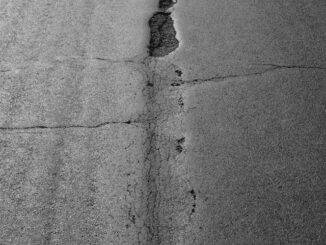
It all happened so fast. One minute I was browsing the cereal aisle, the next I was sprawled on the cold supermarket floor, groceries scattered around me. A sharp pain lanced through my ankle, and a wave of nausea washed over me. My trip and fall in the seemingly innocuous supermarket aisle turned into a weeks-long ordeal, leaving me with a sprained ankle, a hefty medical bill, and a crash course in trip and fall accident liability in Ontario.
As I hobbled out of the store with the help of a concerned stranger, my mind raced. Who was responsible for my fall? Was it just a clumsy accident, or was there negligence involved? The answer, I soon learned, depends on the specific circumstances.
A Trip Down Memory Lane: Common Culprits in Trip and Fall Accidents
My fall was likely caused by an uneven floor surface, a common culprit in Ontario’s trip and fall accidents. These can range from:
- Uneven Flooring: Cracked tiles, poorly repaired carpet edges, or changes in floor level can all catch an unsuspecting foot.
- Debris on the Ground: Scattered toys in a store aisle, fallen leaves on a sidewalk, or even misplaced merchandise can create tripping hazards.
- Poor Lighting: Dim or flickering lights can make it difficult to see potential hazards on the ground.
- Lack of Handrails: Stairs without proper handrails or uneven steps significantly increase the risk of falls.
The Liability Labyrinth: Determining Who’s to Blame
In Ontario, the concept of “occupier’s liability” comes into play when a trip and fall accident occurs on someone else’s property. This means the property owner or occupier has a legal duty to take reasonable care to ensure the safety of people who are lawfully on the premises. However, it’s not a strict liability situation. Here’s where it gets a bit complicated:
- The Occupier’s Duty: Property owners have a responsibility to maintain their premises in a reasonably safe condition. This involves regular inspections, prompt cleaning of spills, and addressing potential hazards like uneven surfaces.
- The Injured Person’s Conduct: The injured person also has a responsibility to take reasonable care for their own safety. This means being aware of their surroundings, avoiding distractions like phones while walking, and wearing appropriate footwear.
The key factor in determining liability is whether the occupier breached their duty of care and if that breach was a direct cause of the fall. Here are some scenarios:
- Liability: If a store owner fails to clean up a large, obvious clear spill that causes a fall, they’d likely be held liable.
- Shared Responsibility: If you trip on a minor defect you could have reasonably noticed, there might be a shared responsibility between you and the occupier.
- Unforeseen Hazard: If you trip on a newly created hazard, like a banana peel someone just dropped, the occupier might not be liable if they couldn’t have reasonably been expected to address it.
Picking Up the Pieces: Legal Options and Next Steps
My situation involved a slightly damaged floor tile I might not have noticed had the lighting been better. Consulting a personal injury lawyer helped me navigate the legal landscape. They explained that in such cases, evidence gathering is crucial. This could involve:
- Photos of the Accident Scene: Documenting the hazard that caused the fall is vital.
- Witness Statements: If anyone saw the fall, their testimonies can be valuable.
- Medical Records: These document the extent of your injuries and link them to the fall.
The Aftermath: Lessons Learned
The weeks that followed my fall were a blur of physiotherapy appointments and financial worries. While the physical pain eventually subsided, the experience left a lasting impression. It highlighted the importance of property owners maintaining safe spaces and our own responsibility to be vigilant.
If you’re ever unfortunate enough to experience a trip and fall accident in Ontario, remember:
- Seek Medical Attention: Your health is the priority.
- Document the Scene: Take pictures and gather witness information if possible.
- Report the Incident: Inform the property owner or manager.
- Consult a Personal Injury Lawyer: They can help determine liability and guide you through the legal process.
Nobody expects a trip to the grocery store to turn into a life-altering event. By understanding the common causes of trip and fall accidents and the legal aspects of liability, we can all be more aware and hopefully avoid similar situations.pen_sparktunesharemore_vert



